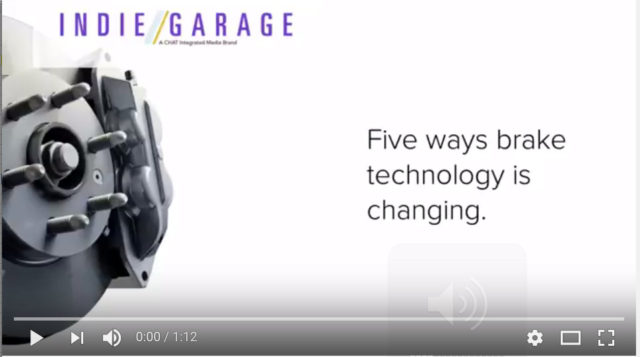A gradual shift to electric and hybrid electric vehicles is just one of the trends that executives at Chassis Brakes International believe will have a major impact on future brake technology.
“We’ve identified five areas of innovation that will transform our industry in terms of how brake systems are designed and developed,” says Dennis Berry, president for the company’s Americas region. “The only way to survive in this new ecosystem will be for new and traditional players to cooperate in defining future vehicle architectures.”
The five technology “drivers” identified by Chassis Brakes International are:
Electrification – Bloomberg projects that 24 percent of all new cars sold will be battery-powered in the not-too-distant future. Electrification along with other efforts to reduce emissions will push the adoption of electro-mechanical parking brakes and regenerative braking systems.
Autonomous Driving – Autonomous vehicles are expected to evolve through different levels of automation (from L1 to L5) until 35 percent of all new cars will be level 3+ by 2030. These vehicles will require automated emergency-brake systems, redundancy in architecture, hardware and software robustness and will use a systems approach to brake-by-wire solutions.
Connectivity – Vehicle connectivity is rapidly moving to sophisticated Vehicle-to-Infrastructure (V2I) and Vehicle-to-Vehicle (V2V) that allows every car to know precisely where every other car is on the road. Future brake systems will need to be electronically linked into these new systems.
New Mobility – Emerging pay-per-use and shared-mobility options will include smartphone integration and will intuitively summon robocabs from providers. This could generate 40-percent of automotive profits by 2030 and further increase the need for sophisticated brake technology.
Lightweighting – The auto industry’s need to reduce vehicle weight will force a move to even stronger and lighter materials such as aluminum for brakes that will reduce vehicle weight without sacrificing passenger safety.
To meet future brake-system requirements for performance, durability and weight reduction over the next 10-15 years, Chassis Brakes International believes the industry will move to brake-by-wire smart brake concepts that will provide a dry (fluidless) solution with redundancy on all four wheels.


0 Comments